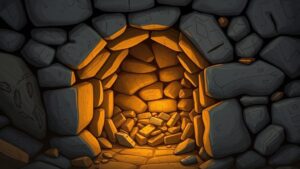Detecting in Drained Reservoirs for Coins and Historic Relics
Introduction
The exploration of drained reservoirs for coins and historic relics is a fascinating and often rewarding endeavor. As bodies of water recede due to drought, maintenance, or drainage for other purposes, they expose previously submerged landscapes that may hold archaeological treasures. Enthusiasts and professionals alike can utilize various techniques to uncover these hidden artifacts, revealing not only monetary value but also significant historical context.
Understanding the Terrain
Before heading out to a drained reservoir, understanding the geography and history of the location is crucial. Many reservoirs were built in areas rich with history, often flooding settlements or ancient transportation routes. Researching the areas past can provide invaluable insights into where to focus detection efforts.
Historical Context
For example, the construction of the Glen Canyon Dam in the 1960s resulted in the flooding of numerous archaeological sites. Diving into historical documentation reveals where towns or villages once stood, providing key insights for treasure hunters.
Geographical Features
The geographical layout of the reservoir, including the original banks, depressions, and former tree lines, should dictate the strategy used for detecting. Employing a metal detector with a capable discrimination setting can help in identifying valuable coins over less significant metal debris.
Essential Equipment for Detection
- Metal Detectors: High-quality metal detectors are imperative. Models like the Minelab CTX 3030 or Garrett AT Pro are known for their sensitivity and depth.
- Digging Tools: Lightweight, portable digging tools are essential for excavating targets without disturbing the environment excessively.
- GPS Devices: Utilizing GPS technology aids in mapping valuable finds and tracking patterns over time.
Techniques for Successful Detection
Employing the right techniques can significantly increase the chances of finding valuable artifacts in drained reservoirs. A methodical approach is required, combining both strategy and skill.
Grid Searching
One effective technique is grid searching. This involves dividing the area into smaller sections and meticulously scanning them one at a time. This systematic approach allows for thorough coverage and minimizes the chance of missing important finds. For example, in a case study conducted in a drained reservoir in Texas, researchers employed grid searching, resulting in the discovery of numerous 19th-century coins.
Targeting High-Probability Areas
Focusing on high-probability areas such as former pathways or spots where recreational activities took place can yield significant results. Historical research can bolster these efforts; if there was once a popular fishing spot or a trading post near the original shoreline, those areas should be prioritized. In a notable instance, an amateur treasure hunter located a series of silver dollars nearby a former ferry landing, entirely due to predictive modeling based on historical maps.
Legal Considerations and Ethics
Detecting in drained reservoirs raises important legal and ethical considerations. Many regions have laws regarding the ownership of found artifacts, particularly those of archaeological significance. For example, the Archaeological Resources Protection Act in the United States establishes strict guidelines for excavating and collecting items from historically significant sites.
Obtaining Permission
Prior to engaging in treasure hunting, it is essential to obtain the necessary permits. Engaging local authorities or governing bodies can help clarify regulations, ensuring that the pursuit of relics is both legal and respectful.
Real-World Applications and Success Stories
The thrill of uncovering lost coins and historic relics has led to numerous success stories. For example, a group of dedicated detectors found a trove of Civil War-era artifacts beneath the muddy banks of a drained reservoir in Virginia, which later contributed to local historical exhibitions and community education.
Conclusion
Detecting in drained reservoirs for coins and historic relics represents more than just a hobby; it is an opportunity to connect with history and preserve narratives that might otherwise be forgotten. With the right preparation, equipment, and ethical considerations, individuals can engage in meaningful exploration that not only uncovers valuable items but also enriches our understanding of the past.

